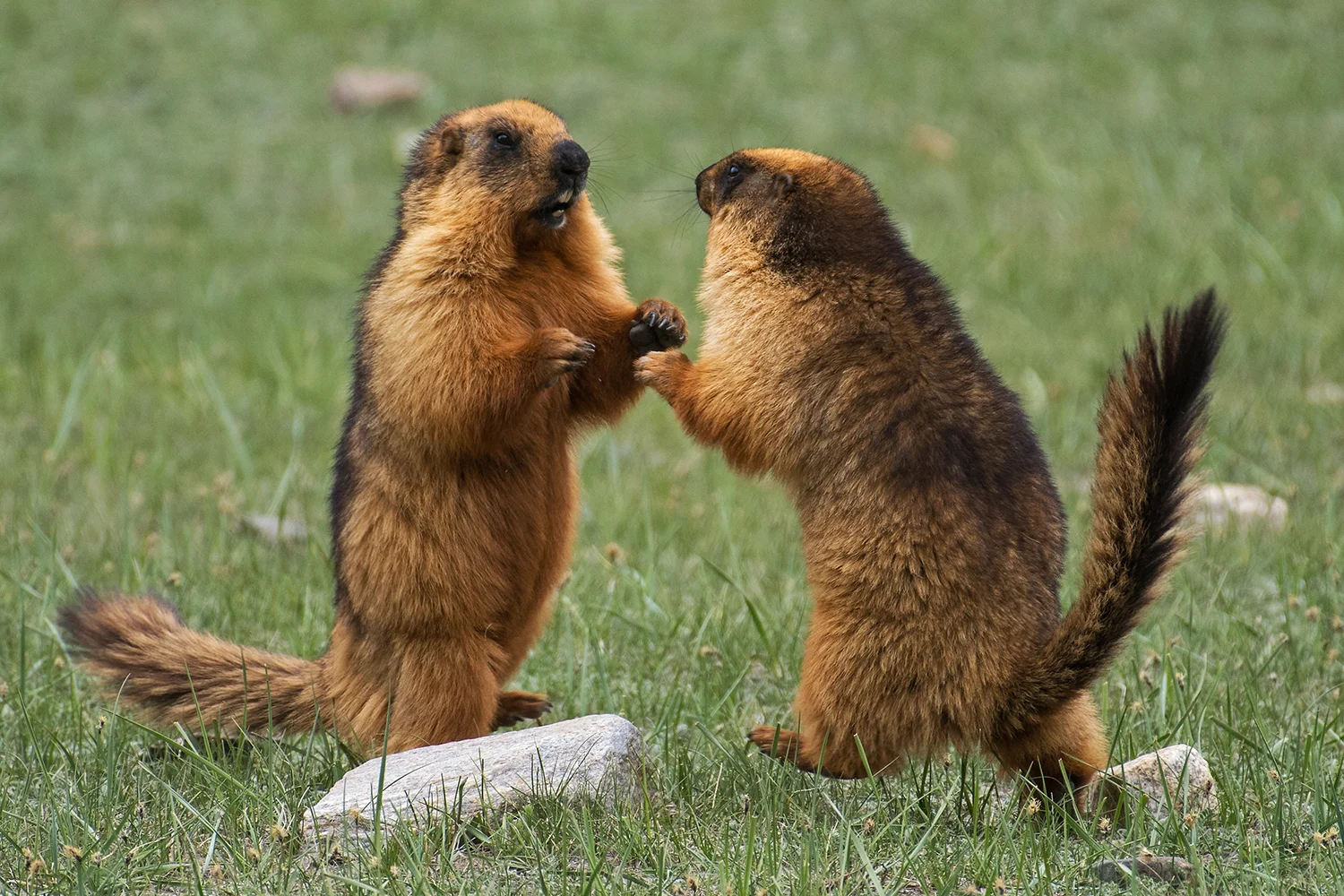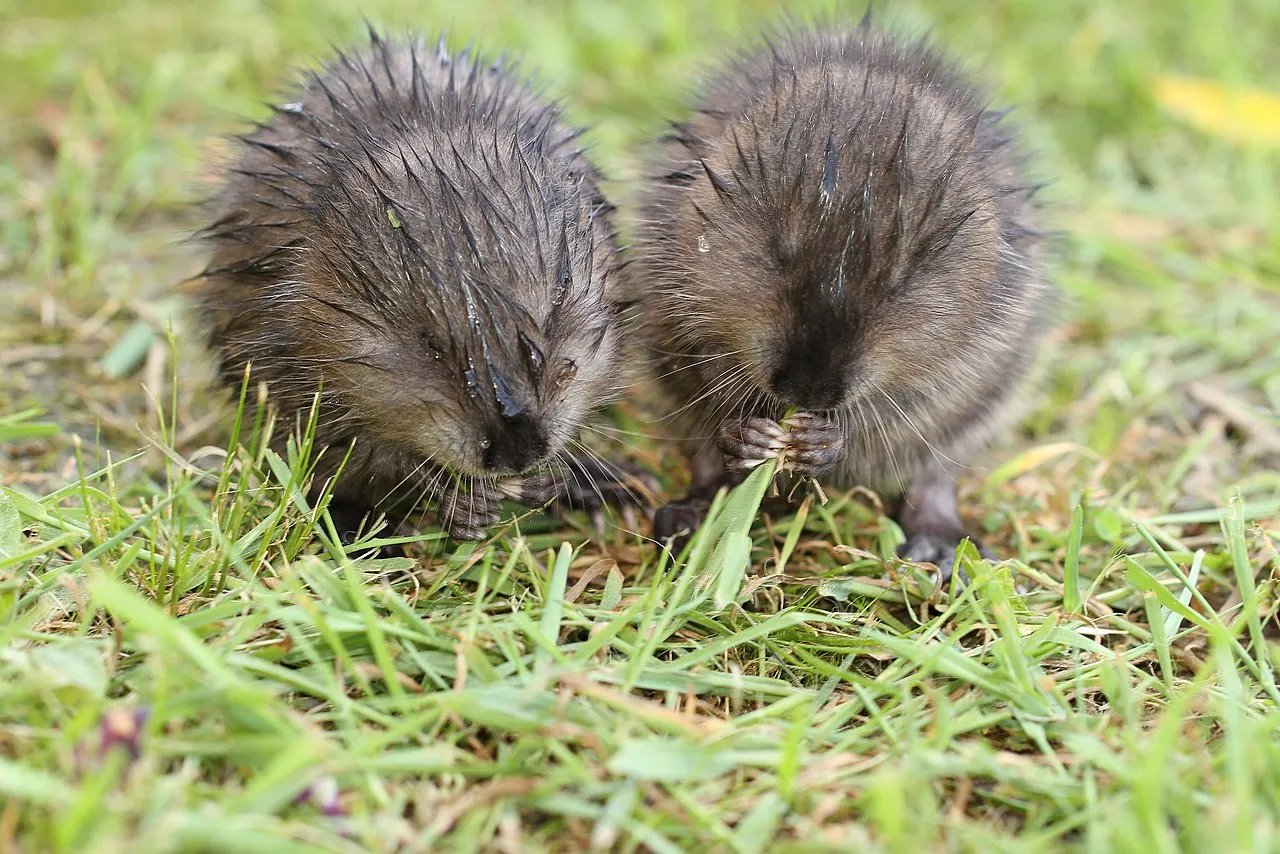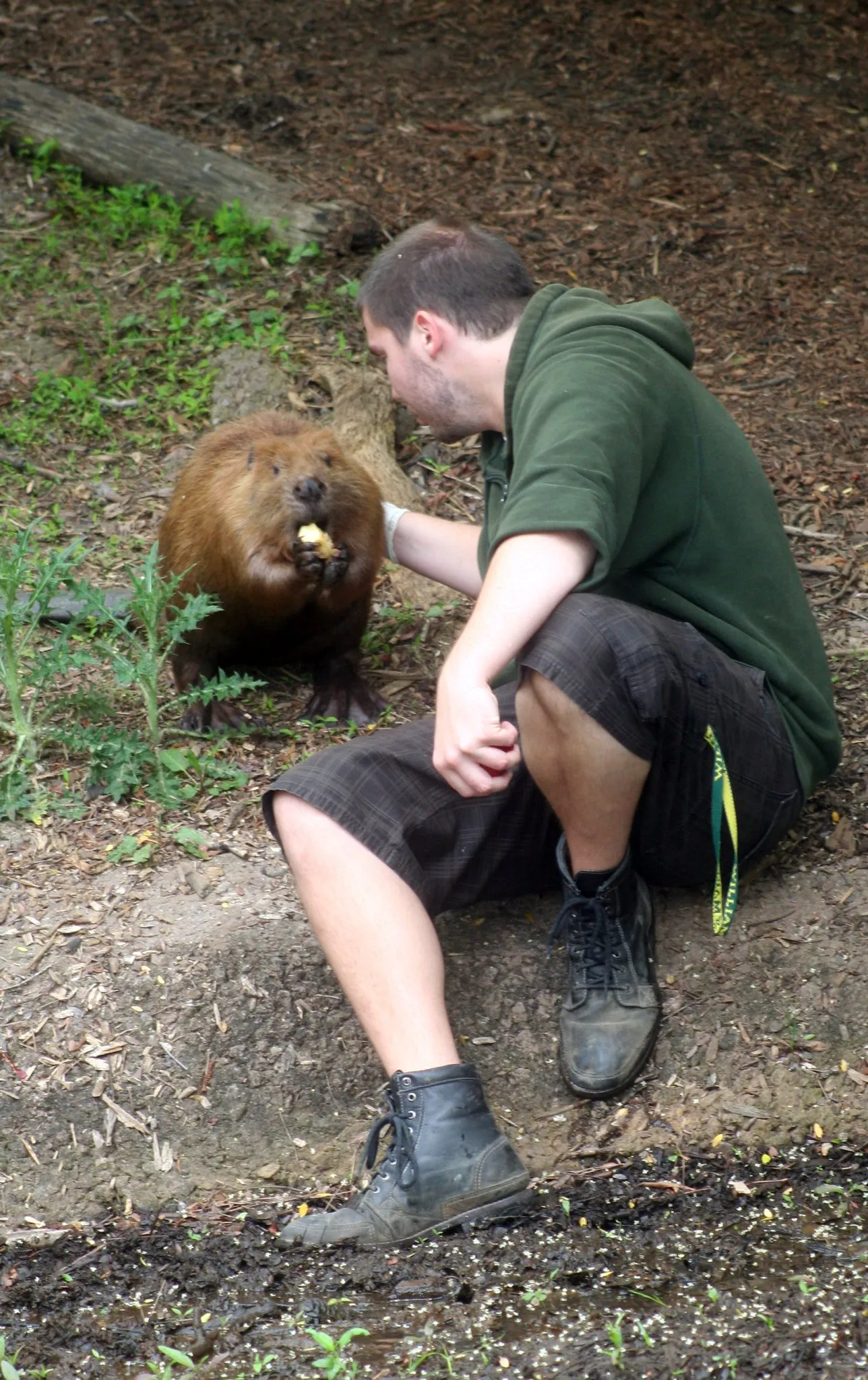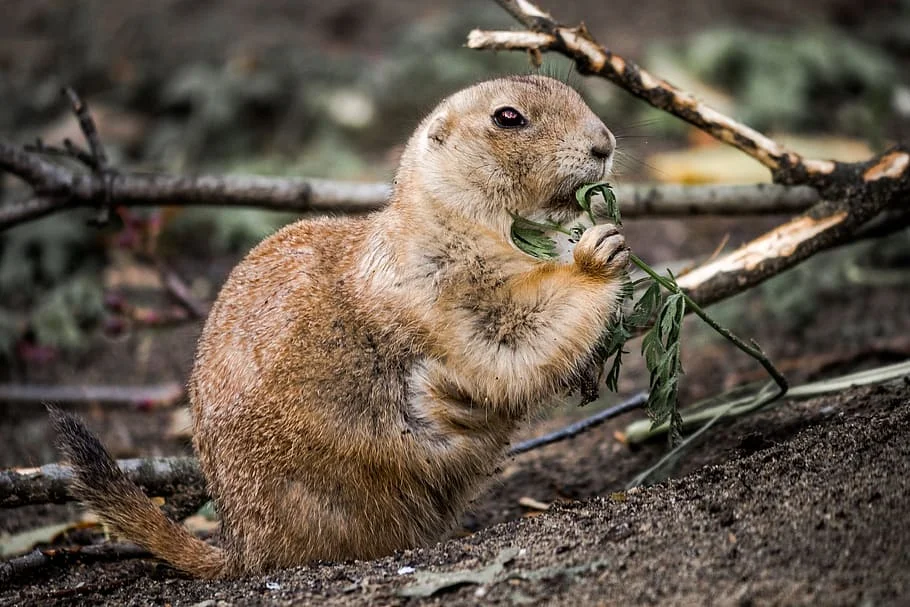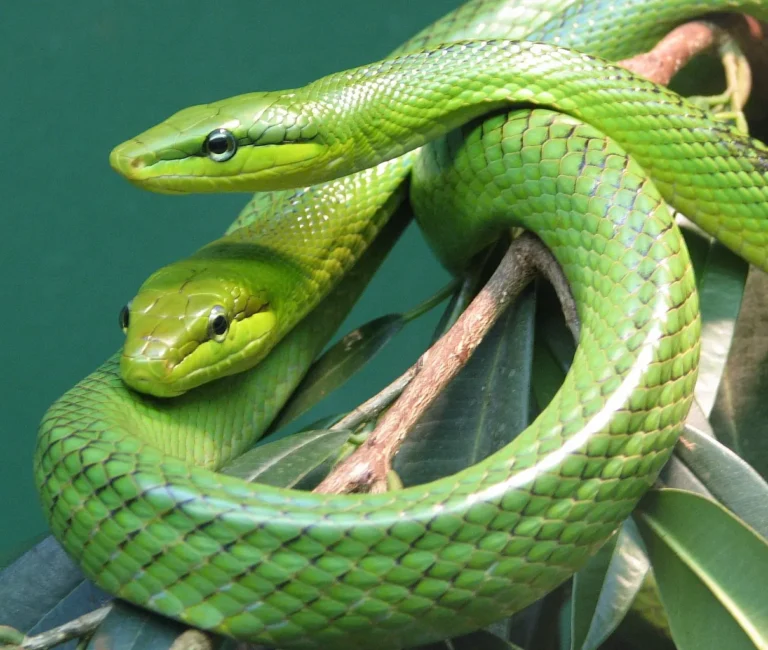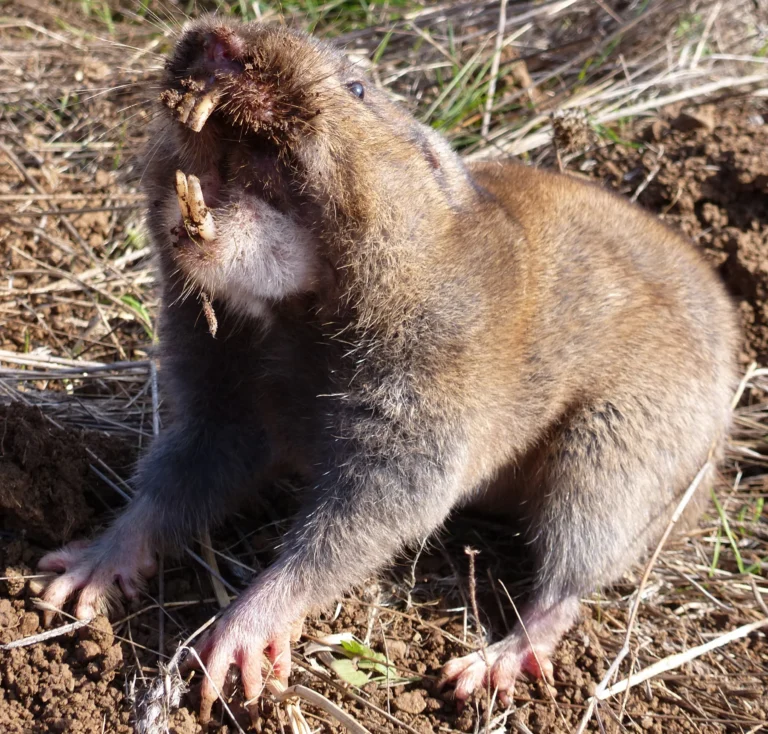Marmot Vs Woodchuck Size, Weight, Overall Comparison
The comparison between marmots and woodchucks aims to delineate the distinctions between these burrowing rodents, often confused due to their similar appearances. By examining various sources, we uncover key differences in behavior, habitat, and physical traits, providing clarity for enthusiasts and those interested in these ground-dwelling creatures.
I. Identification:
– Marmots and groundhogs exhibit striking similarities, but they differ in several key aspects that aid in their identification.
II. Behavioral Distinctions:
– Yellow-bellied marmots are social animals, living in colonies of up to 20 members, while groundhogs are solitary and protective of their territories.
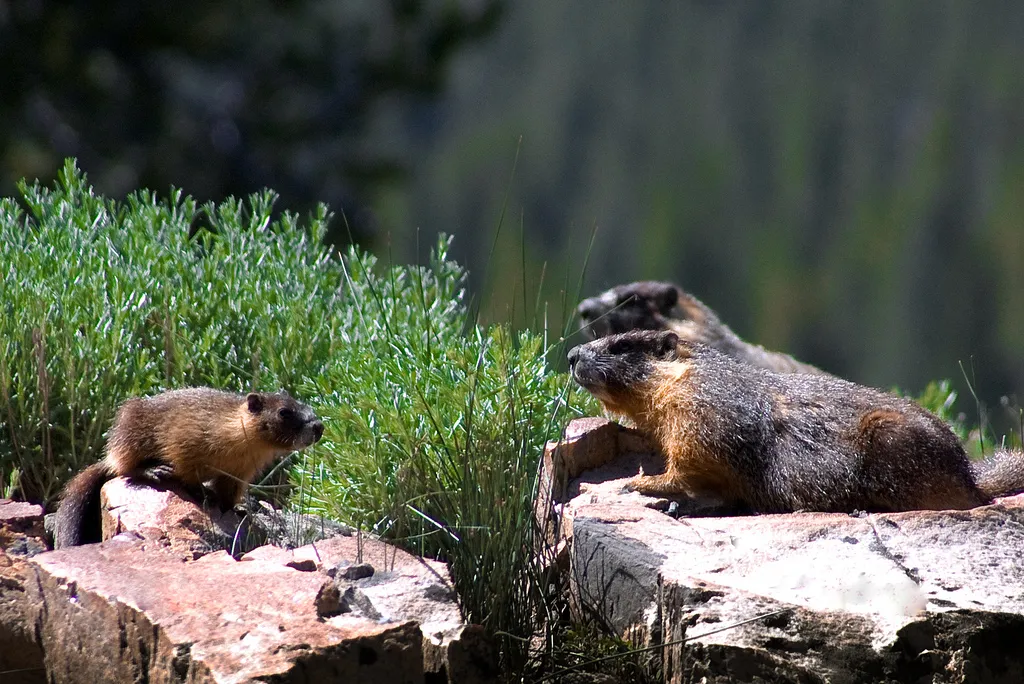
III. Visual Guides:
– Rich visual content, including images and videos, enhances the learning experience by highlighting the unique physical characteristics that differentiate marmots and woodchucks.
IV. Woodchuck’s Scientific Classification:
– Woodchucks belong to the marmot family, Sciuridae, establishing their affiliation with broader rodent species.
V. Differentiating Terms:
– The interchangeability of terms like groundhog and woodchuck reflects linguistic nuances surrounding these burrowing rodents.
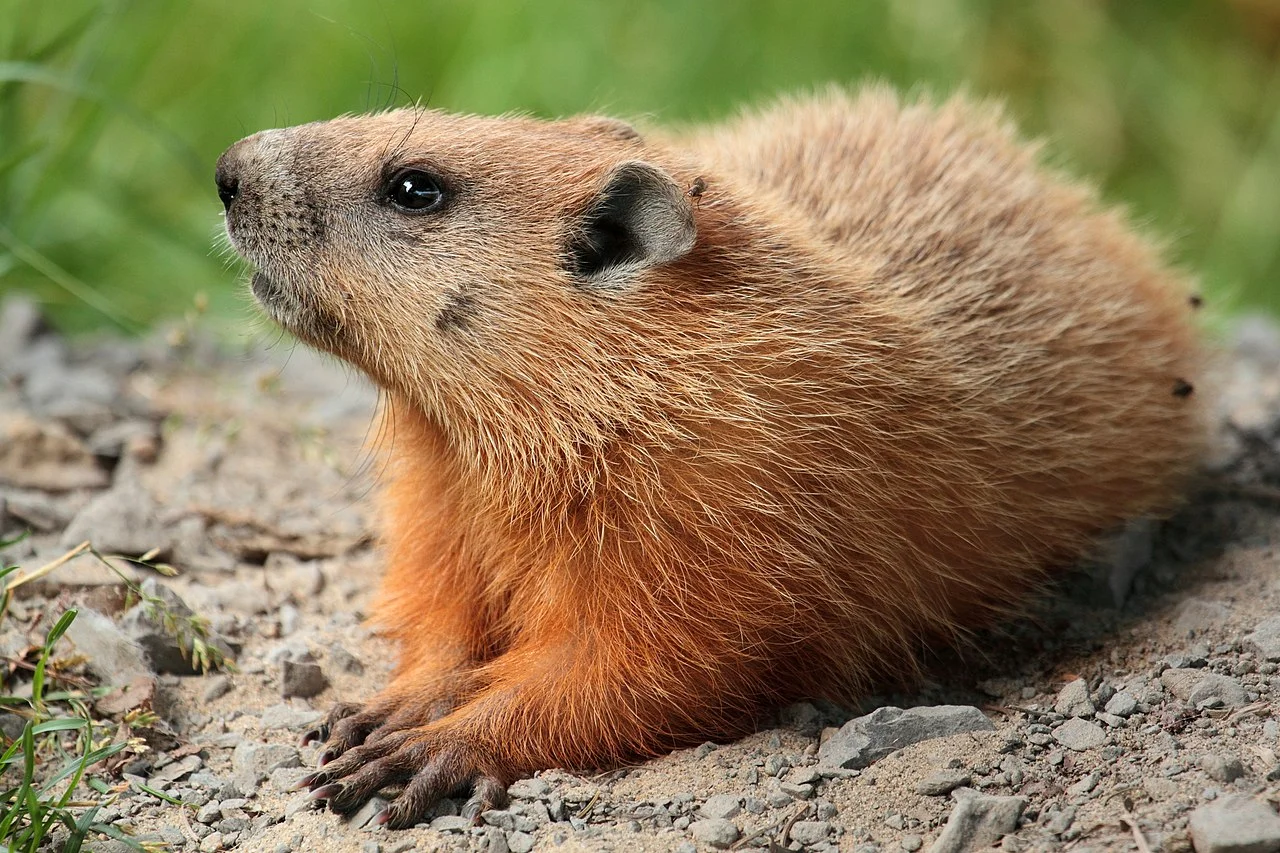
VI. Size and Diet Insights:
– Groundhogs, classified as marmots within the order Rodentia, exhibit distinct size and dietary preferences.
VII. Regional Perspectives:
– Regional variations in social organization among groundhogs offer insights into their adaptive behaviors in different environments.
VIII. Common Myths:
– Discussions on platforms like Reddit and Quora address common misconceptions and debates surrounding groundhogs and woodchucks.
IX. Differentiation from Gophers:
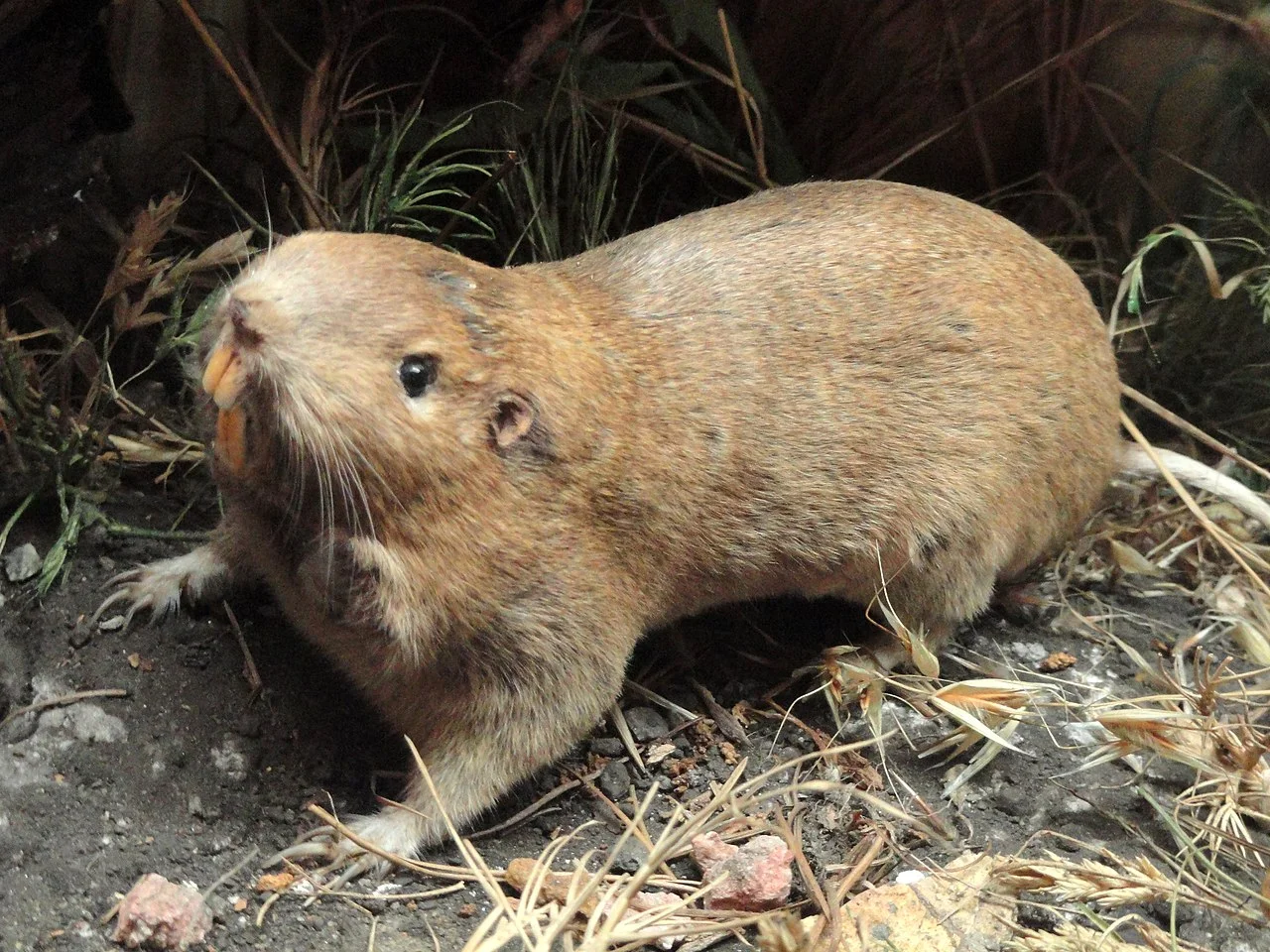
– Gophers and groundhogs exhibit differences as burrowing rodents found across North America, dispelling potential misconceptions.
X. Local Cultural Insights:
– Local nomenclature and cultural references contribute to a deeper understanding of woodchucks and groundhogs in various regions.
XI. Behavioral and Physical Contrasts:
– Identifiable differences between marmots and groundhogs encompass factors like size, fur length, and tail characteristics.
*Details of Comparison
| Criteria | Marmot | Woodchuck |
| Taxonomy | Family Sciuridae, Subfamily Sciurinae, Tribe Marmotini, Genus Marmota |
Family Sciuridae, Subfamily Sciurinae, Tribe Marmotini, Genus Marmota
|
| Appearance | Robust, round eyes, varied fur colors |
Sturdy, bushy tail, brown to reddish-brown fur
|
| Size | 40-70 cm | 40-65 cm |
| Weight | Varies widely, >8 kg | 2-6 kg |
| Dentition and Bite Force (PSI) | Herbivorous dentition; Strong bite force (300-700 PSI) |
Herbivorous dentition; Strong bite force (300-700 PSI)
|
| Physical Offensive Advantages | Sharp claws, powerful limbs for digging |
Sharp claws, powerful limbs for digging
|
| Physical Defensive Advantages | Retreat into burrows; Some use alarm calls |
Retreat into burrows
|
| Speed | Limited running speed |
Slightly faster running speed
|
| Agility | Agile climbers, burrow navigators |
Agile climbers, burrow navigators
|
| Senses | Rely on sight, hearing, and smell |
Rely on sight, hearing, and smell
|
| Overall Physical Capacity | Adapted to specific habitats |
Adapted to specific habitats
|
| Habitat Preference(s) and Geographic Region | Mountains, alpine meadows; Distributed globally |
Grassy areas, fields; Primarily in North America
|
| Tracks | Distinct five-toed tracks |
Distinct five-toed tracks
|
| Lifespan | Varies, generally longer | 4-6 years |
| Mode of Feeding | Herbivores, different plant preferences |
Herbivores, different plant preferences
|
| Intelligence | Social and problem-solving intelligence |
Social and problem-solving intelligence
|
| Social Behavior | Varied, some highly social |
Generally solitary
|
| Mode of Reproduction | Often monogamous; Breeding season varies |
Polygamous; Breeding season in early spring
|
| Parental Behavior | Both parents care for offspring |
Female primary caregiver; Pups independent after a few weeks
|
| Proximity to Human-Inhabited Areas | Found near hiking trails, tourist areas |
Common in suburban areas, agricultural regions
|
| Behavior Toward Humans | Varies, some accustomed to human presence |
Generally tolerant, may become habituated
|
| Danger Posed to Humans | Minimal danger, defensive behaviors |
Minimal danger, defensive behaviors
|
| Associated Precautions | Respect natural behaviors and habitats |
Caution advised in habituated areas
|
| Conservation Status | Varies, some face threats |
Generally least concern
|
Key Points:
Similarities:
-
- Taxonomic classification.
- Herbivorous diet and reliance on burrows.
- Physical attributes for digging and burrow defense.
- Similarities in senses and intelligence.
Differences:
-
- Size, weight, and lifespan.
- Mating systems and social behaviors.
- Habitat preferences and geographic distribution.
- Proximity and behavior towards humans.
- Conservation status, with marmots facing more varied threats.
1. Taxonomy:
Marmot:
Family: Sciuridae
Subfamily: Sciurinae
Tribe: Marmotini
Genus: Marmota
Woodchuck:
Family: Sciuridae
Subfamily: Sciurinae
Tribe: Marmotini
Genus: Marmota
Both marmots and woodchucks belong to the same taxonomic family, subfamily, tribe, and genus, indicating a close evolutionary relationship.
2. Appearance:
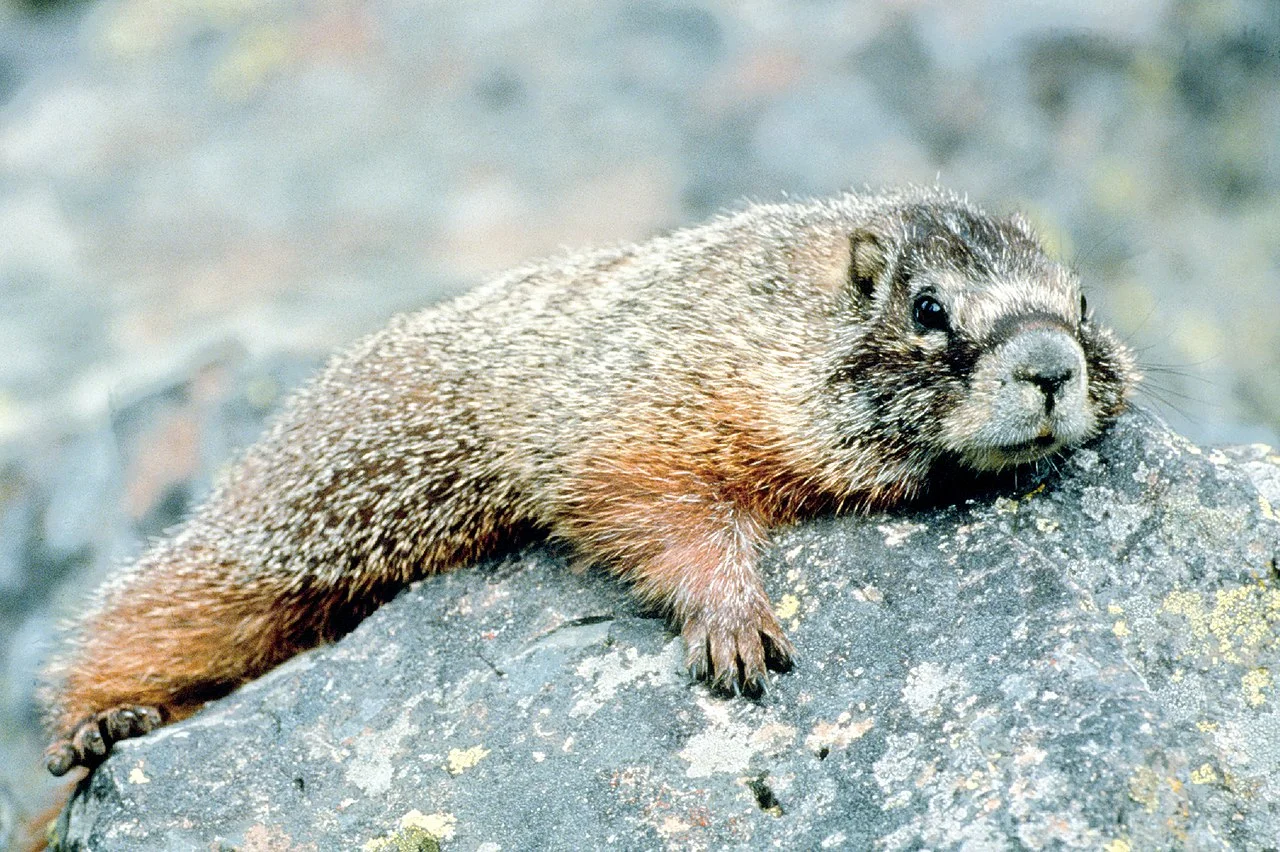
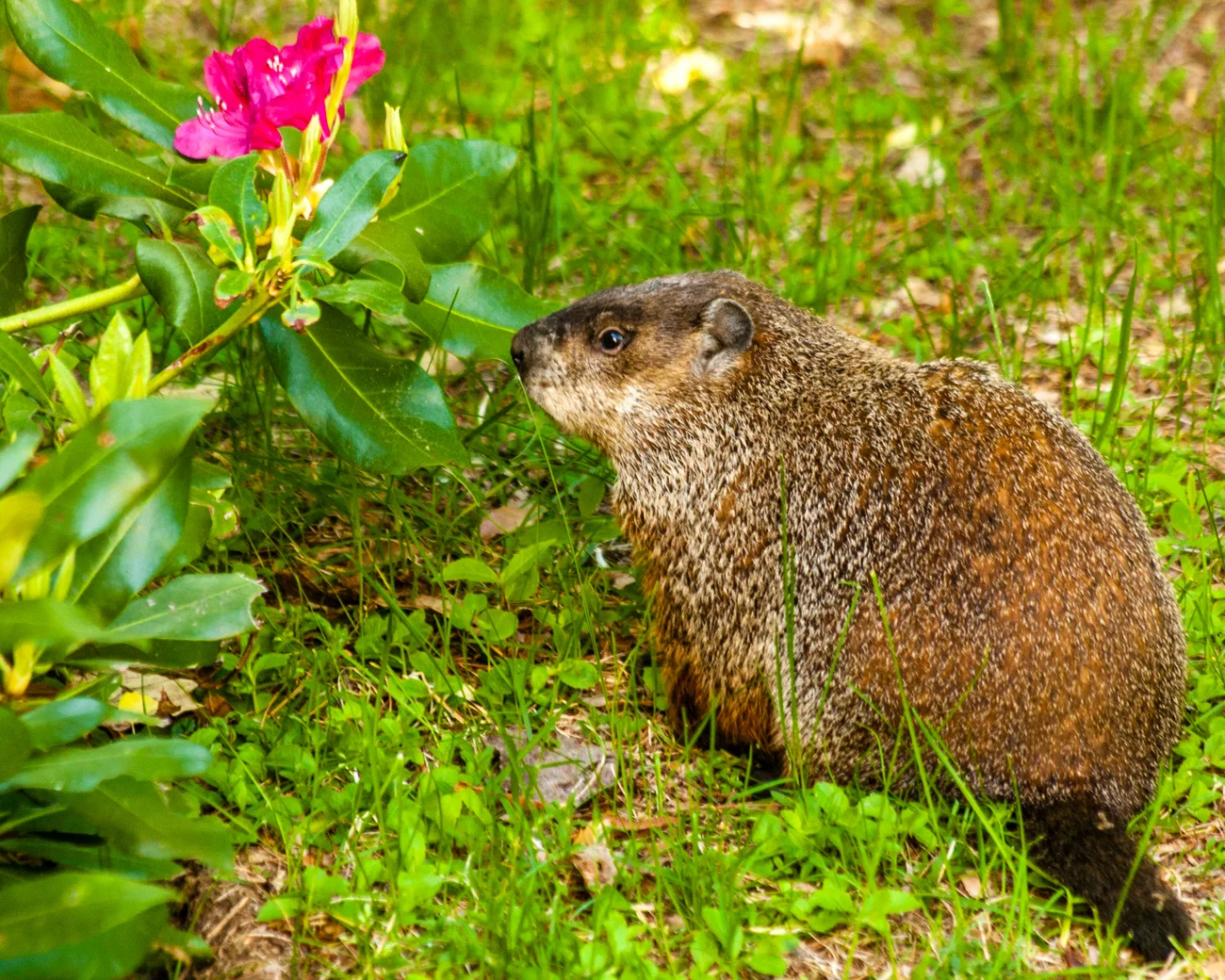
Marmot:
Typically have a robust, stocky body with short legs.
Fur color varies among species, ranging from shades of brown to gray.
Prominent facial features include round eyes and small, rounded ears.
Woodchuck:
Similar to marmots, woodchucks have a sturdy build with short legs.
Fur color commonly ranges from brown to reddish-brown.
Characterized by a relatively short, bushy tail.
Comparison: Both marmots and woodchucks share a similar physical appearance, emphasizing their close evolutionary relationship within the same genus.
Ecological Implications:
Their appearance aids in camouflage within their respective habitats, providing them with a survival advantage against predators.
3. Size:
Marmot:
Sizes vary among species, with some smaller marmots around 40 cm (16 inches) in length and larger species reaching up to 70 cm (28 inches).
Woodchuck:
Typically range from 40 to 65 cm (16 to 26 inches) in length.
Comparison: While both marmots and woodchucks exhibit size variation, woodchucks generally fall within a slightly smaller size range.
Ecological Implications:
Size can influence the ecological niche they occupy, impacting factors such as diet, competition for resources, and interactions with other species.
4. Weight:
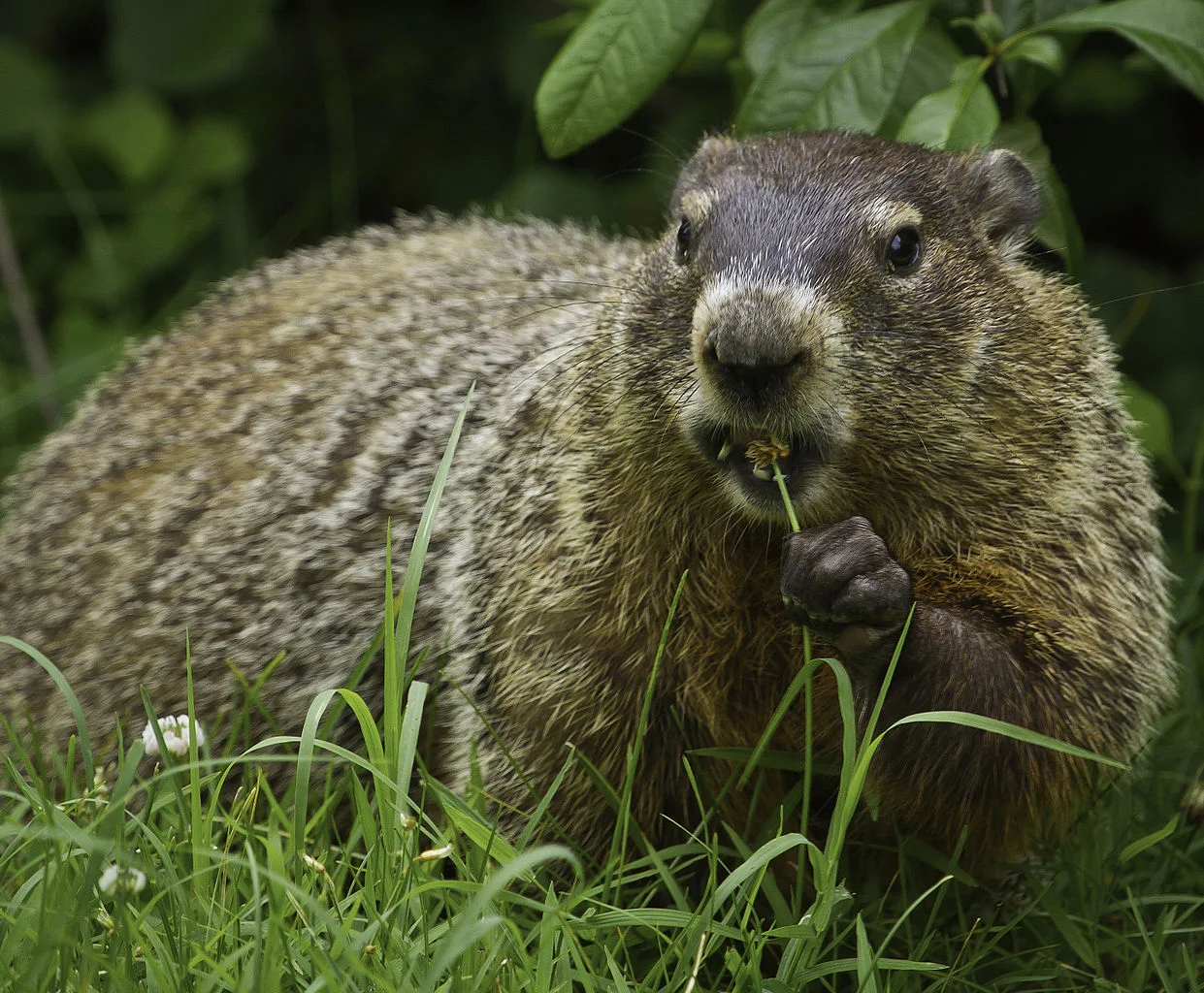
Marmot:
Weight varies across species; smaller marmots may weigh around 1 kg (2.2 lbs), while larger species can exceed 8 kg (17.6 lbs).
Woodchuck:
Typically weigh between 2 to 6 kg (4.4 to 13.2 lbs).
Comparison: Woodchucks tend to have a narrower weight range compared to the broader variation observed in marmot species.
Ecological Implications:
Weight influences their energy requirements, hibernation patterns, and overall ecological impact on vegetation and soil composition.
5. Dentition and Bite Force (PSI):
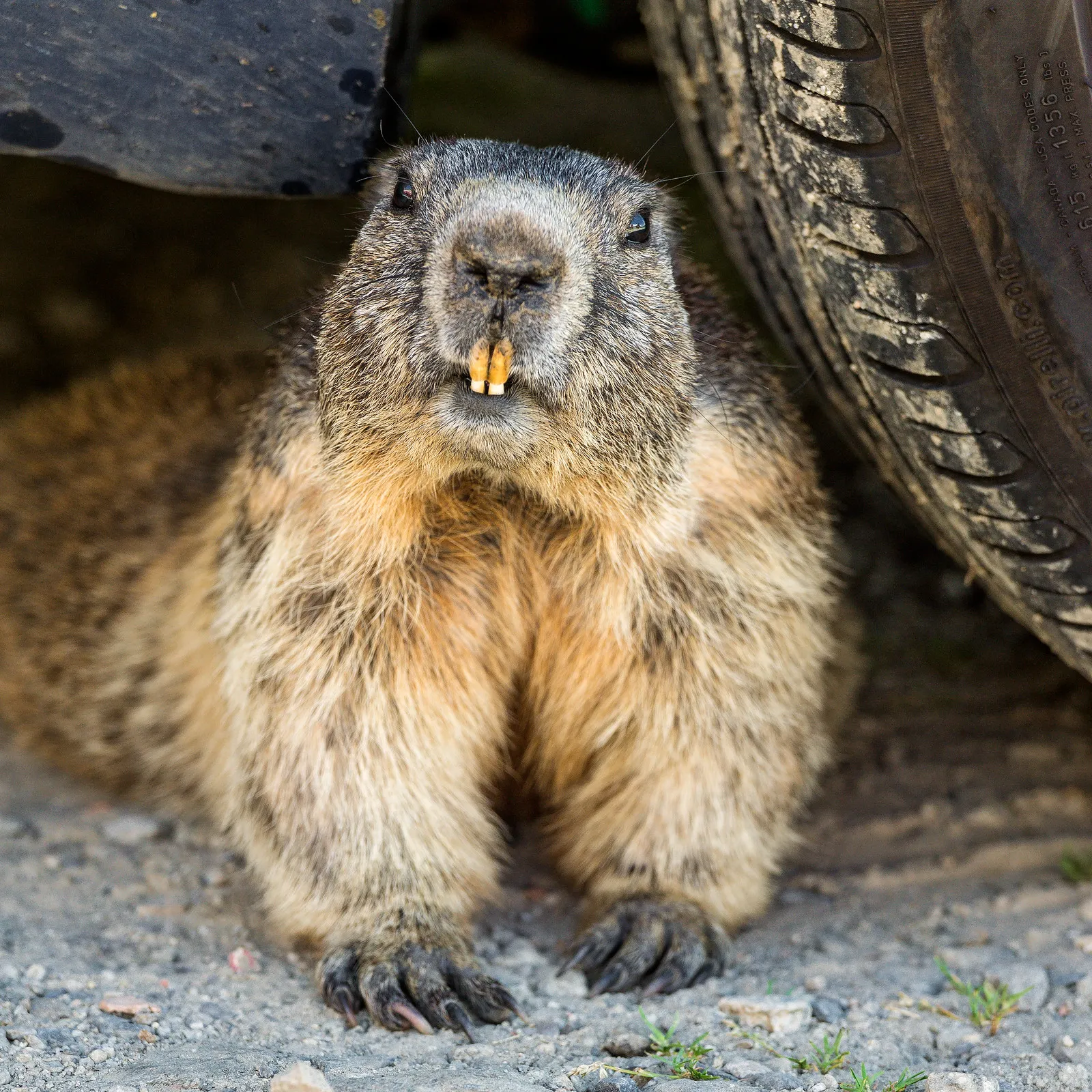
Marmot:
Herbivorous dentition with sharp incisors for gnawing on vegetation.
Bite force ranges, but specific PSI data may vary among species.
Woodchuck:
Herbivorous dentition with strong incisors for cutting through vegetation.
Approximate bite force ranges from 300 to 700 PSI.
Comparison: Both marmots and woodchucks share herbivorous dentition adapted for their plant-based diet, but woodchucks are known for their relatively stronger bite force.
Ecological Implications:
Bite force can influence their ability to access and process different plant materials, affecting their foraging strategies and impact on local vegetation.
6. Physical Offensive Advantages:
Marmot:
Sharp claws and powerful limbs aid in digging burrows quickly.
Some species may exhibit a territorial nature, defending their burrows if threatened.
Woodchuck:
Strong forelimbs and sharp claws for efficient burrow excavation.
Known for their excellent digging capabilities, creating extensive burrow systems.
Comparison: Both marmots and woodchucks share strong digging adaptations, utilizing sharp claws and powerful limbs for offensive purposes.
Ecological Implications:
Efficient burrowing contributes to soil aeration and may influence local vegetation dynamics.
7. Physical Defensive Advantages:
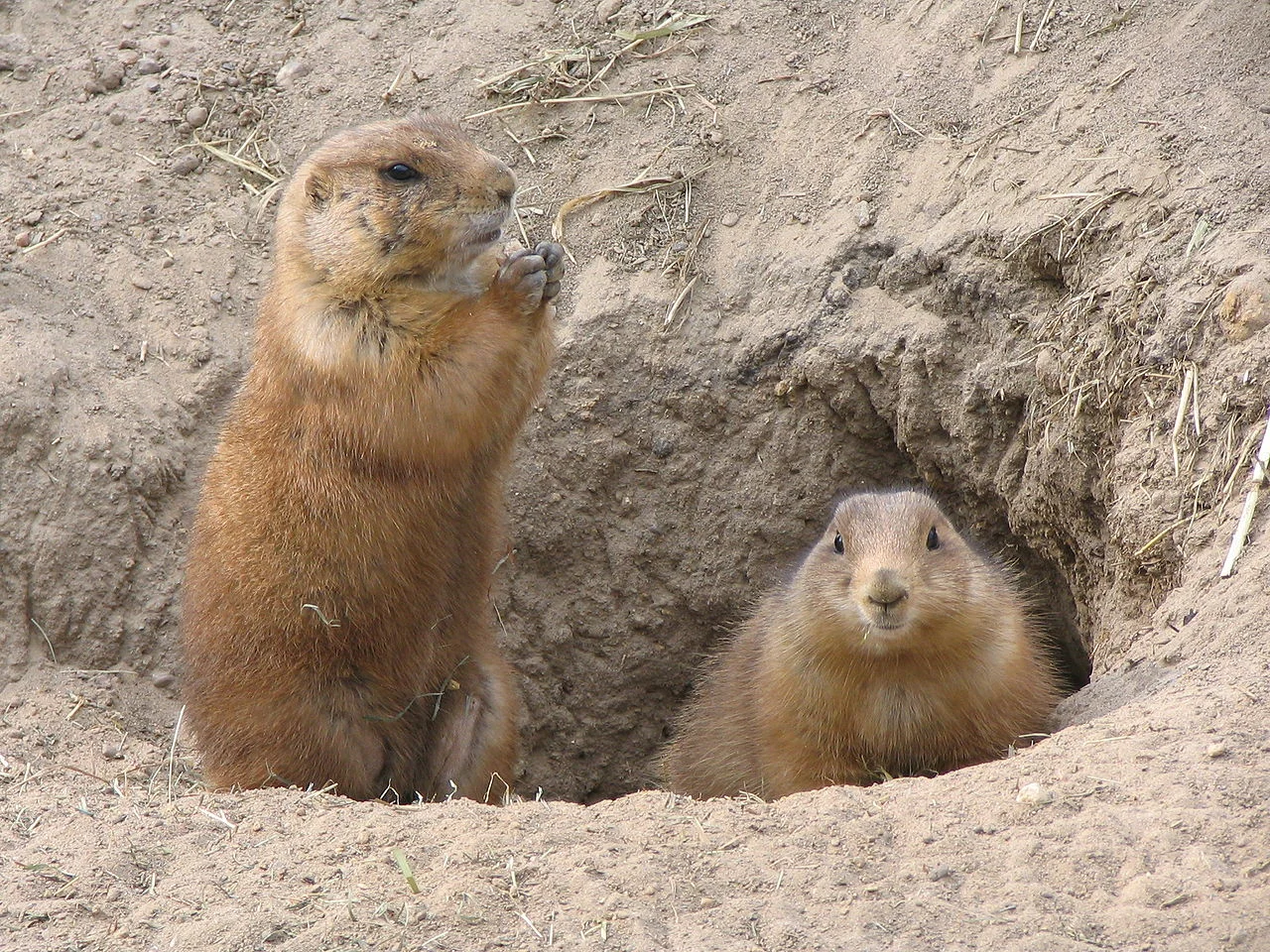
Marmot:
Vigilant behavior and the ability to retreat quickly into burrows.
Some species exhibit alarm calls to warn others of potential threats.
Woodchuck:
Rapid retreat into burrows as a primary defensive strategy.
Vigilance and keen awareness of surroundings.
Comparison: Both marmots and woodchucks rely on burrows as a primary means of defense and share vigilance as a defensive behavior.
Ecological Implications:
Their defensive strategies contribute to predator-prey dynamics in their ecosystems, influencing the behavior of both species.
8. Speed (Km/hour or Mile/hour):
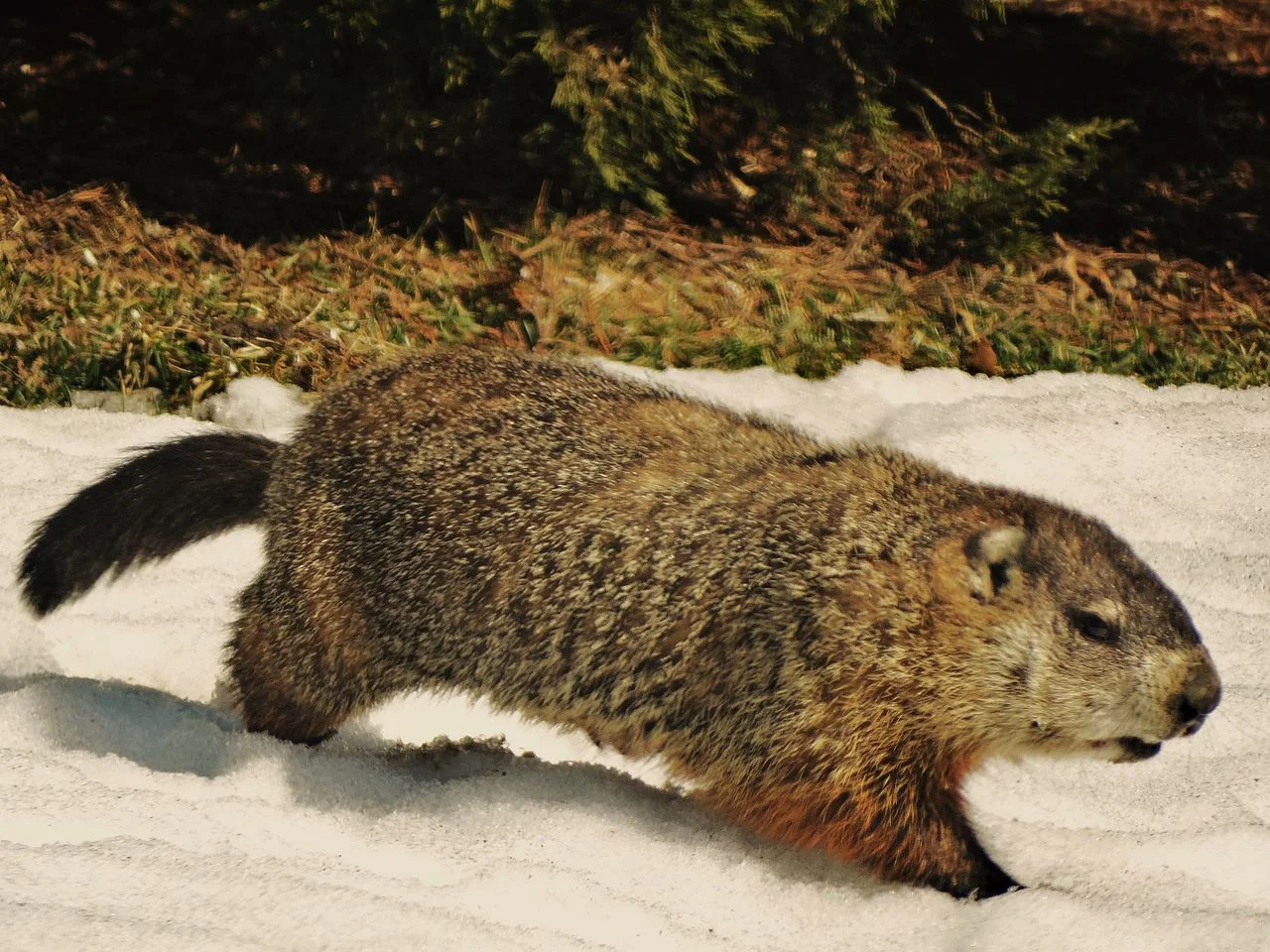
Marmot:
Limited running speed, typically not known for swift movements.
Quick agility in navigating rocky terrains.
Woodchuck:
Moderate running speed, capable of covering short distances quickly.
Adapted for quick retreats into burrows.
Comparison: Woodchucks generally exhibit slightly faster running speeds compared to marmots.
Ecological Implications:
Running speed influences their ability to escape from predators, contributing to their overall survival in their habitats.
9. Agility:
Marmot:
Agile climbers and skilled at navigating uneven terrains.
Adapted for swift movements within their burrow systems.
Woodchuck:
Agile climbers and proficient in negotiating obstacles.
Well-suited for maneuvering within burrows.
Comparison: Both marmots and woodchucks display agility, particularly in their burrow environments and when navigating challenging terrains.
Ecological Implications:
Agility enhances their ability to forage, escape predators, and adapt to changing environmental conditions.
10. Senses:
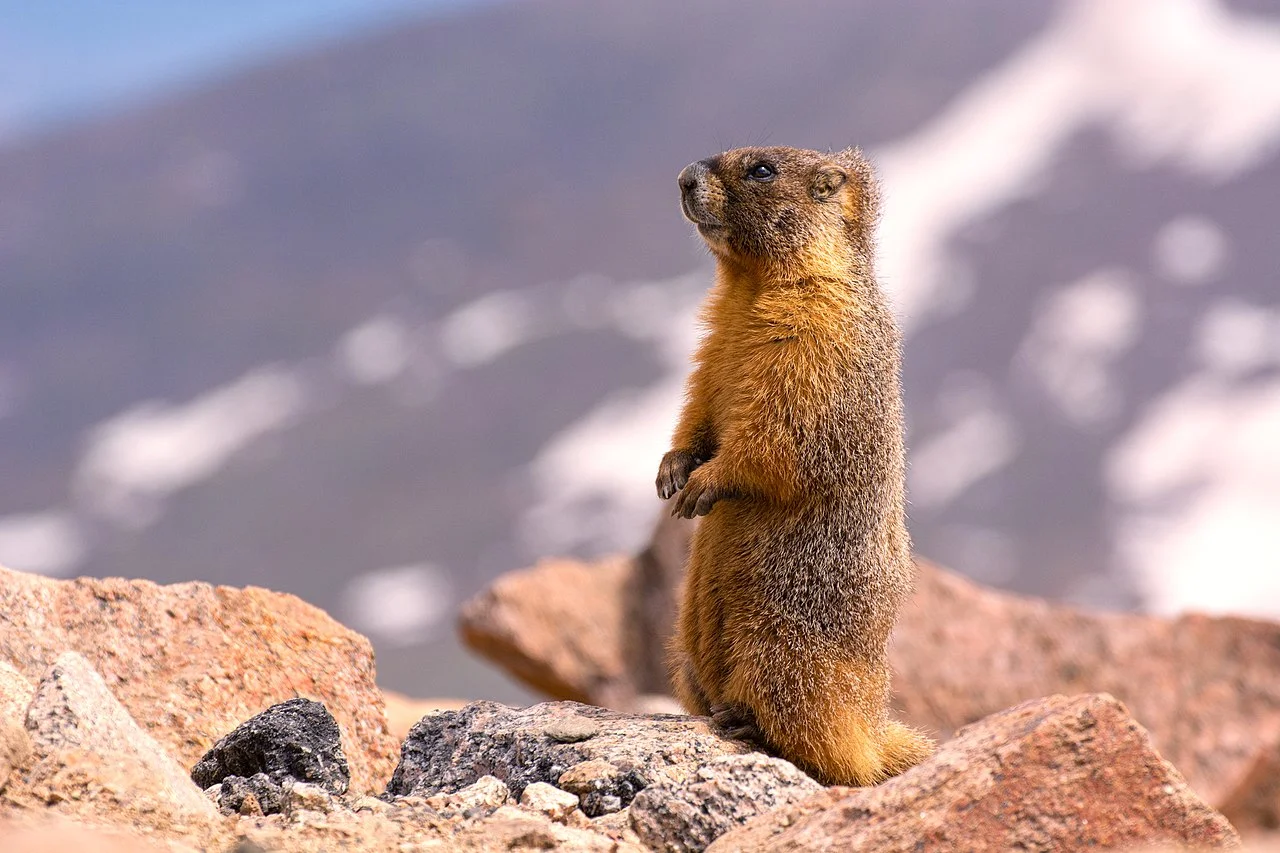
Marmot:
Well-developed senses of sight and hearing.
Keen olfactory senses for detecting predators and identifying mates.
Woodchuck:
Good eyesight and hearing.
Reliant on a strong sense of smell for communication and locating food.
Comparison: Both marmots and woodchucks rely on a combination of sight, hearing, and smell for various aspects of their daily activities.
Ecological Implications:
Sensory adaptations are crucial for detecting environmental changes, locating food, and avoiding predators, impacting their ecological roles.
11. Overall Physical Capacity:
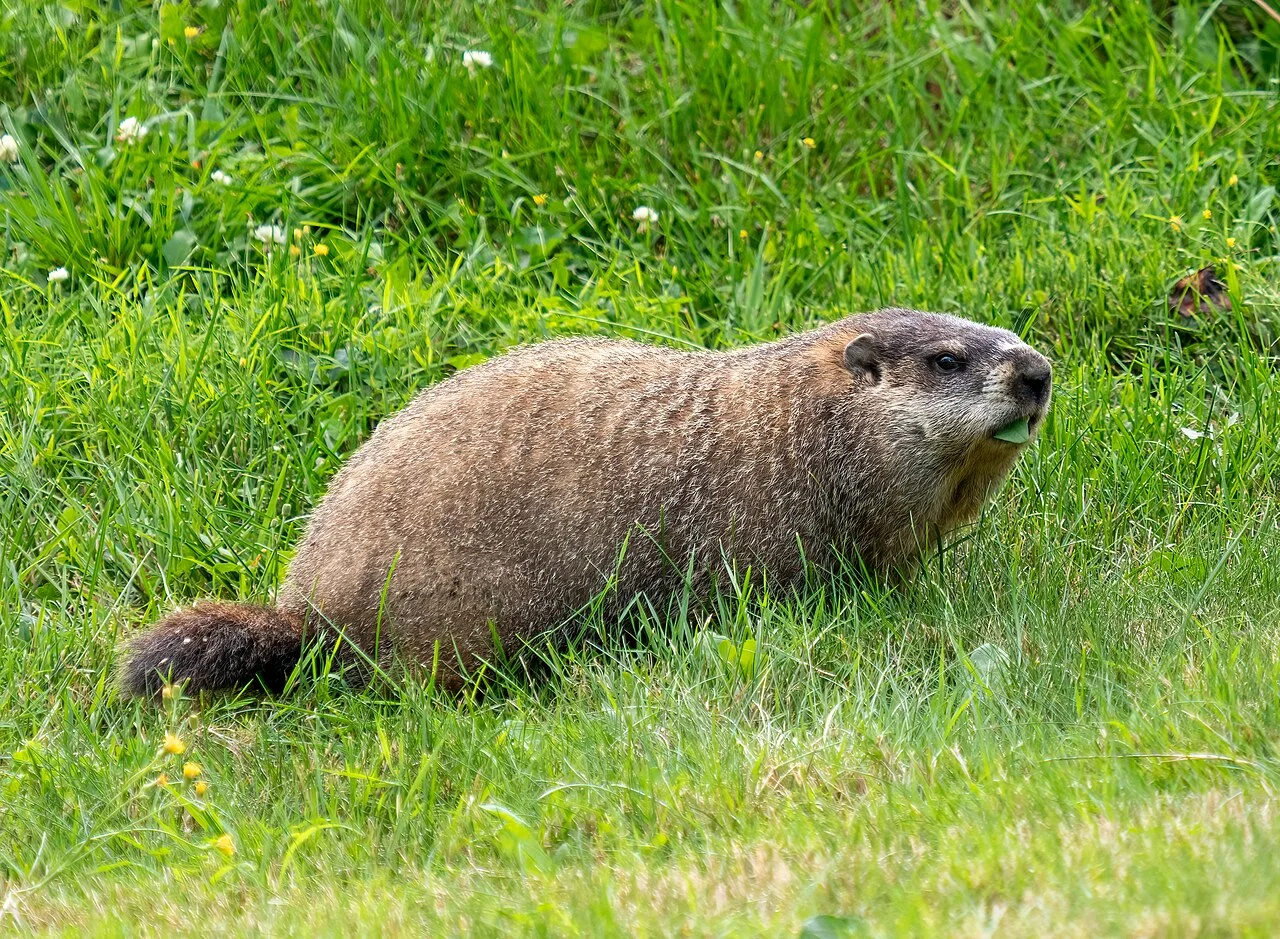
Marmot:
Robust build and strong limbs for burrowing and climbing.
Adaptable to a range of environmental conditions.
Woodchuck:
Sturdy physique with powerful limbs for efficient digging.
Suited for a ground-dwelling lifestyle.
Comparison: Both marmots and woodchucks possess physical adaptations that contribute to their overall capacity to thrive in their respective habitats.
Ecological Implications:
Physical capacity influences their ecological roles, including their impact on vegetation, soil structure, and interactions with other species.
12. Habitat Preference(s) and Geographic Region:
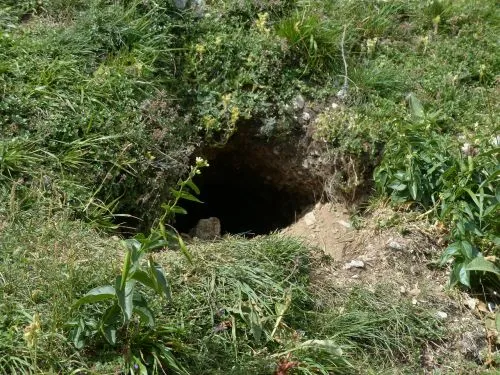
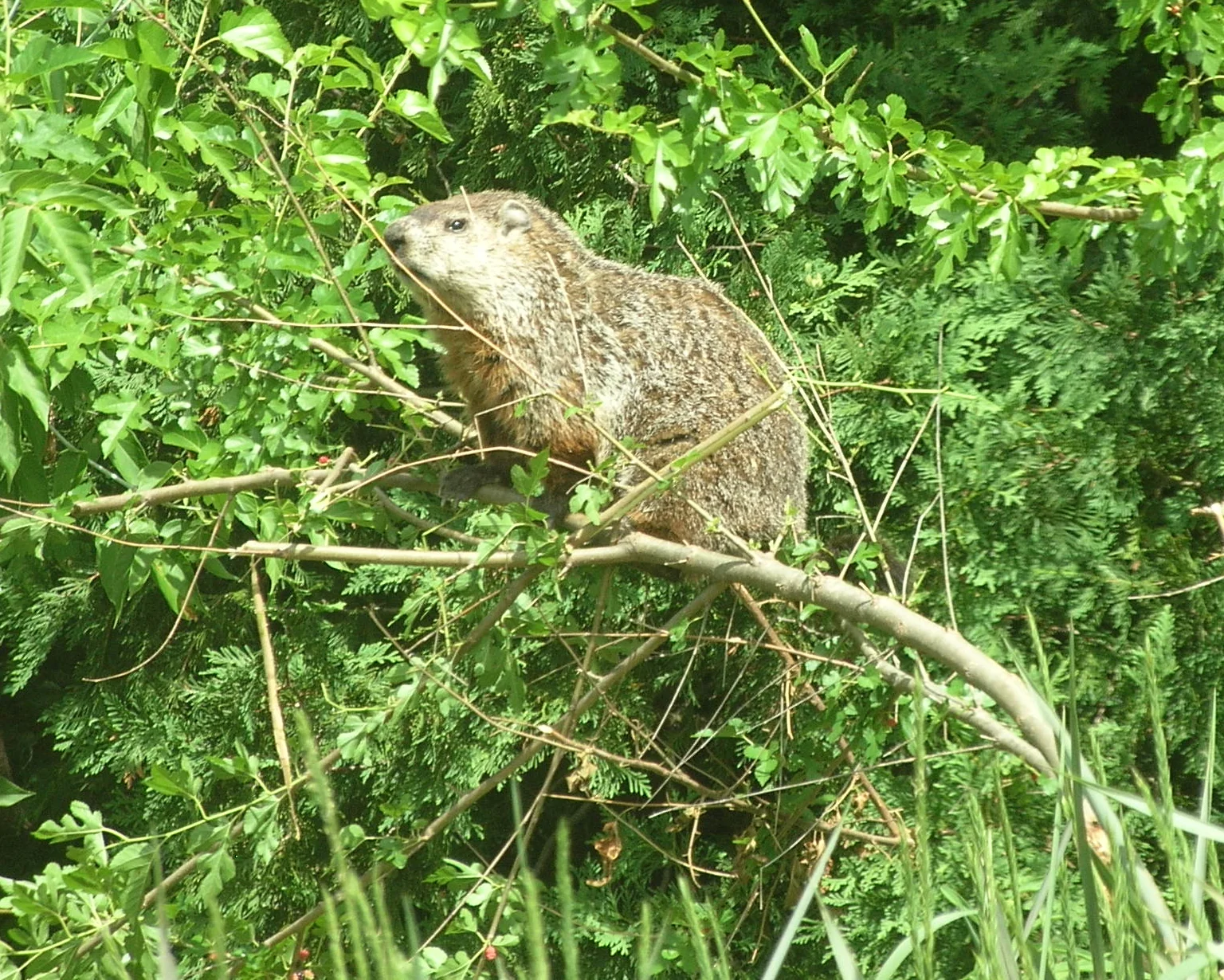
Marmot:
Found in mountainous regions, alpine meadows, and grasslands.
Distributed across North America, Europe, and Asia.
Woodchuck:
Prefers grassy areas, fields, and open woodlands.
Primarily native to North America.
Comparison: While both marmots and woodchucks share preferences for open habitats, their specific geographic distributions differ.
Ecological Implications:
Habitat preferences influence their roles in shaping local ecosystems and interactions with other species.
13. Tracks:
Marmot:
Distinctive tracks with five-toed footprints.
Claw marks may be visible in soft soil.
Woodchuck:
Well-defined tracks with five toes on both front and hind feet.
Claw marks may be present in tracks.
Comparison: Both marmots and woodchucks leave similar tracks due to their shared anatomical features.
Ecological Implications:
Tracking and identifying species through prints contribute to ecological research and monitoring of populations in their habitats.
14. Lifespan:
Marmot:
Lifespan varies among species, generally ranging from 8 to 15 years.
Influenced by factors like predation, environmental conditions, and hibernation success.
Woodchuck:
Typically have a lifespan of 4 to 6 years in the wild.
Predation, diseases, and environmental factors impact their longevity.
Comparison: Marmots generally exhibit a longer lifespan compared to woodchucks.
Ecological Implications:
Lifespan influences population dynamics, reproductive strategies, and the overall contribution of the species to the ecosystem.
15. Mode of Feeding:
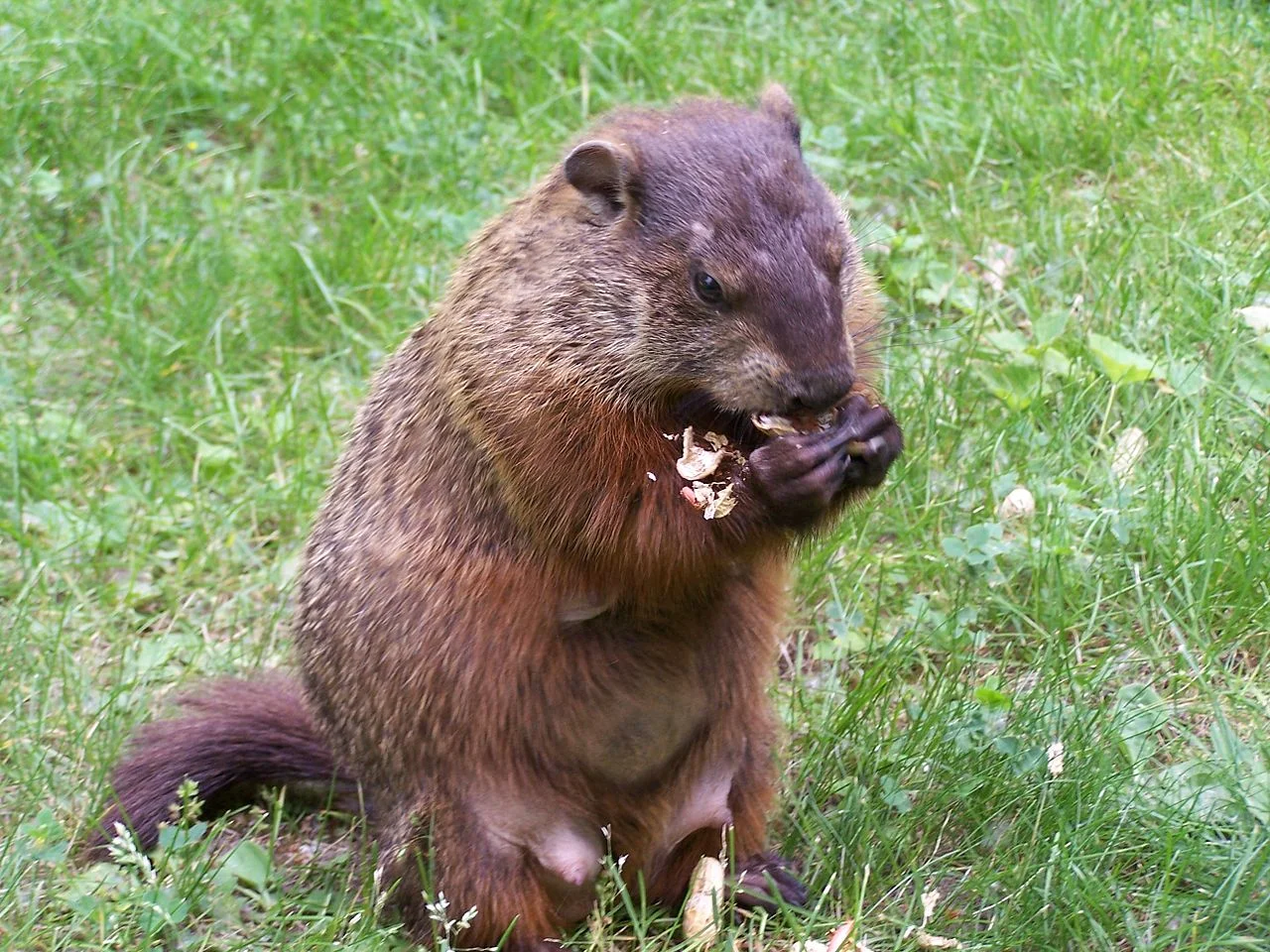
Marmot:
Herbivorous diet, primarily consuming grasses, herbs, and vegetation.
Efficient at foraging in alpine meadows and grassy habitats.
Woodchuck:
Herbivorous, feeding on grasses, clover, and other plants.
Creates feeding burrows near food sources.
Comparison: Both marmots and woodchucks share a herbivorous diet, with preferences for different plant species.
Ecological Implications:
Feeding habits contribute to vegetation control, seed dispersal, and impact the availability of resources for other species in their ecosystems.
16. Intelligence:
Marmot:
Exhibit social intelligence, with communication through vocalizations and body language.
Capable of learning and adapting to changing environmental conditions.
Woodchuck:
Display problem-solving skills, especially in creating complex burrow systems.
Can demonstrate memory and recognition of their surroundings.
Comparison: Both marmots and woodchucks display intelligence, adapted to their specific ecological challenges.
Ecological Implications:
Intelligence plays a role in foraging strategies, predator avoidance, and adaptation to human-altered environments.
17. Social Behavior:
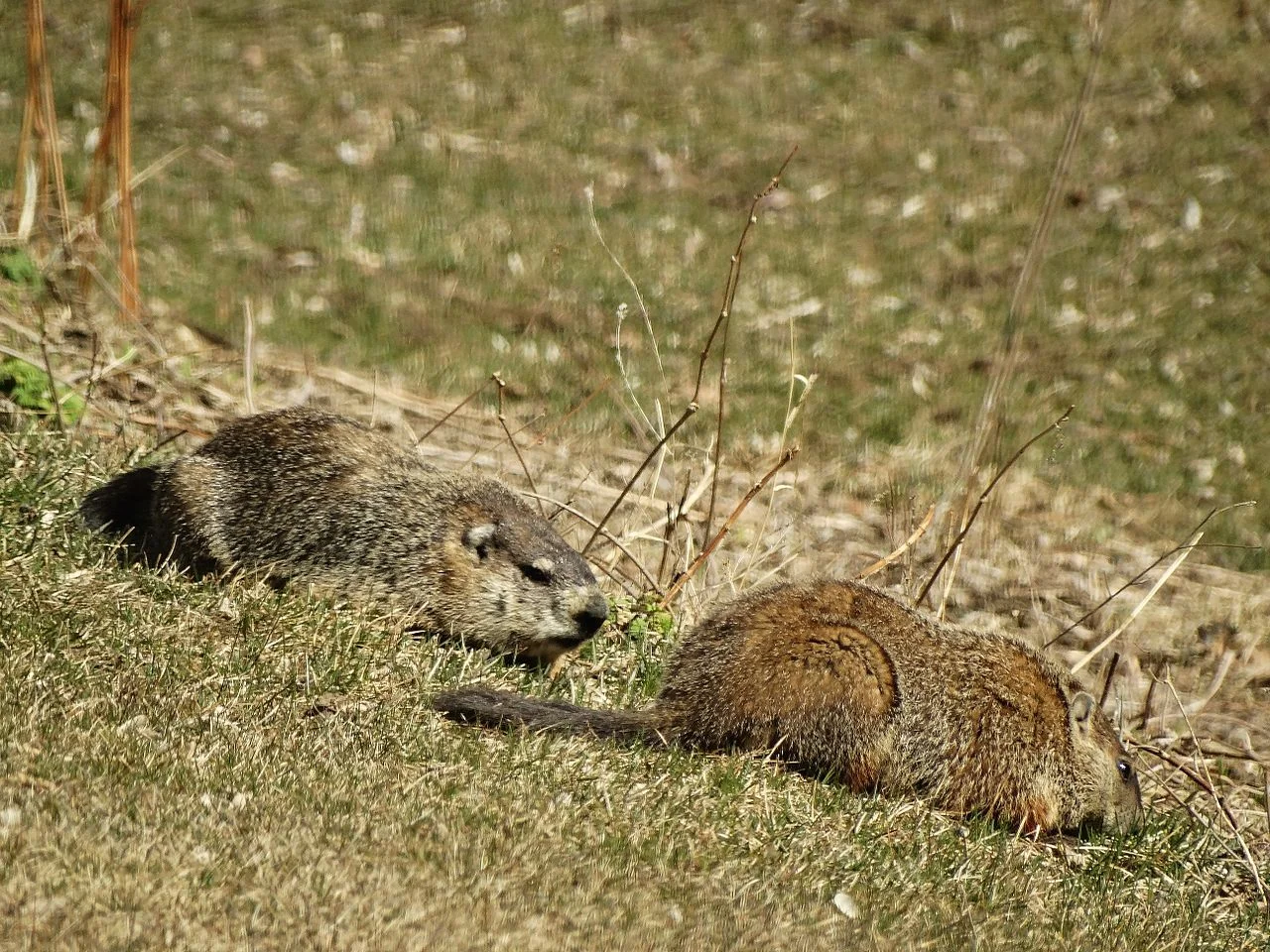
Marmot:
Varied social structures, ranging from solitary species to highly social colonies.
Some species exhibit communal burrow systems.
Woodchuck:
Generally solitary, with individual burrow systems.
Tolerant of conspecifics in overlapping home ranges.
Comparison: Marmots often exhibit more complex social structures, including communal living, compared to the generally solitary nature of woodchucks.
Ecological Implications:
Social behaviors influence population dynamics, resource utilization, and responses to environmental changes.
18. Mode of Reproduction:
Marmot:
Typically, marmots have a monogamous mating system.
Breeding season varies among species, usually occurring in spring or early summer.
Gestation period lasts around 30 days, and females give birth to a litter of pups.
Woodchuck:
Polygamous mating system, with males mating with multiple females.
Breeding season occurs in early spring.
Gestation period lasts about 32 days, and a litter of 2 to 6 pups is born.
Comparison: Marmots generally exhibit a more monogamous mating system, while woodchucks lean towards polygamous behavior.
Ecological Implications:
Reproductive strategies impact population dynamics and genetic diversity within the species, influencing their ecological roles.
19. Parental Behavior:
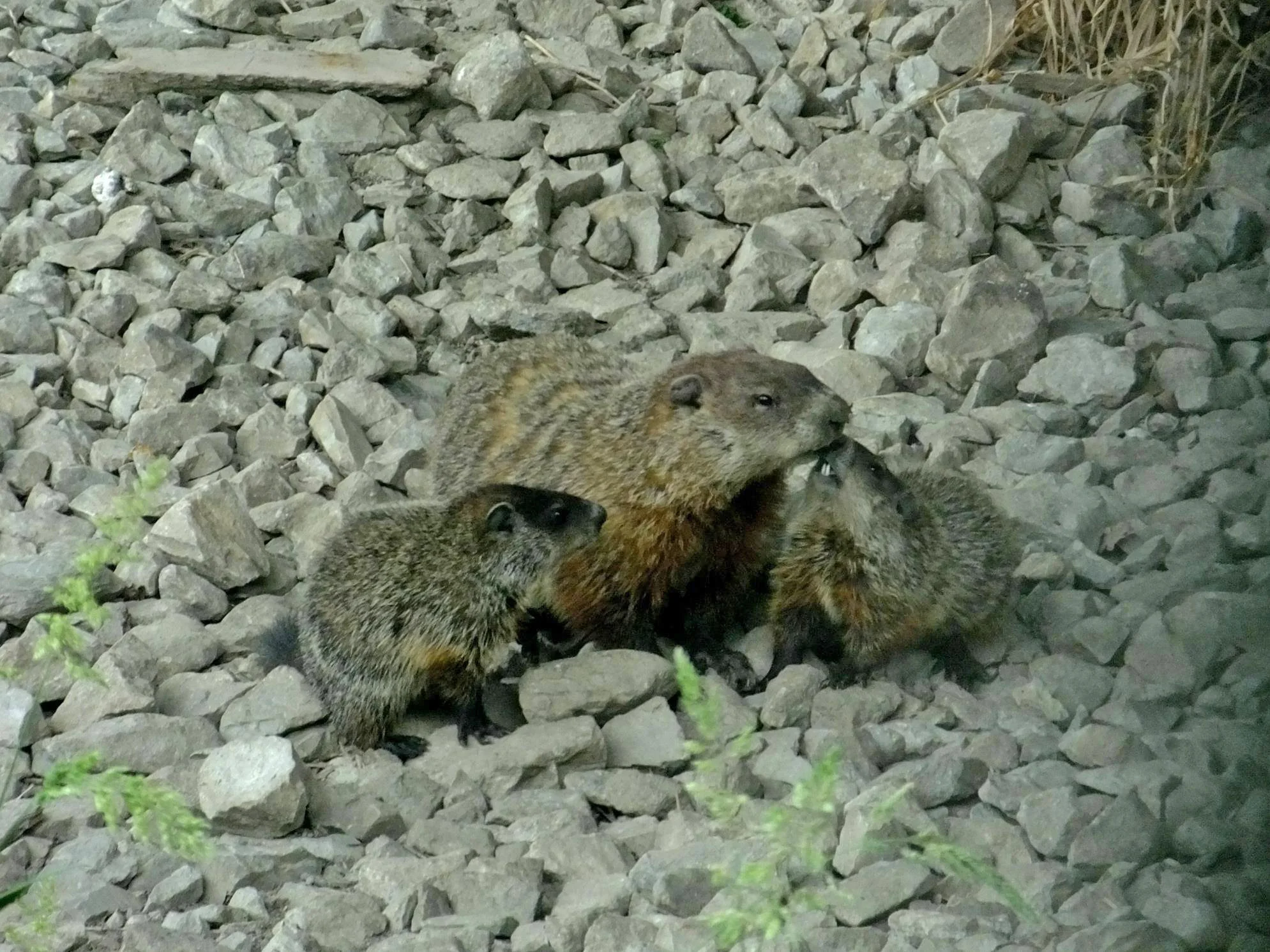
Marmot:
Both parents contribute to caring for and protecting the offspring.
Young marmots remain in the burrow for a few weeks before venturing outside.
Woodchuck:
Female woodchucks are the primary caregivers, nursing and protecting the pups.
Young woodchucks leave the burrow and become independent after a few weeks.
Comparison: While both marmots and woodchucks exhibit parental care, the level and distribution of care responsibilities differ.
Ecological Implications:
Parental behaviors influence the survival rates of offspring, impacting population growth and stability.
20. Proximity to Human-Inhabited Areas:
Marmot:
Some species may adapt to human-altered landscapes, particularly in mountainous regions.
May be found near hiking trails or tourist areas.
Woodchuck:
Often found in proximity to human-inhabited areas, including fields, gardens, and suburban landscapes.
Can become pests in agricultural regions.
Comparison: Woodchucks are more commonly associated with human-inhabited areas, including suburban and agricultural landscapes.
Ecological Implications:
Proximity to humans can lead to conflicts, influence resource availability, and impact the behavior and population dynamics of these species.
21. Behavior Toward Humans:
Marmot:
Behavior varies; some species may be more skittish and avoid human presence, while others may become accustomed to tourists.
Woodchuck:
Often more tolerant of human presence, especially in suburban areas.
May become habituated to human activities, leading to potential conflicts.
Comparison: Woodchucks generally display more tolerance and adaptation to human presence compared to some marmot species.
Ecological Implications:
Behavior toward humans can influence conservation efforts, human-wildlife interactions, and the impact of these species on urban and suburban environments.
22. Danger Posed to Humans:
Marmot:
Generally pose minimal danger to humans.
Rare instances of defensive behavior if they feel threatened, such as hissing or biting.
Woodchuck:
Typically not dangerous to humans.
May carry diseases, and defensive bites can occur if they feel cornered.
Comparison: Both marmots and woodchucks are not considered highly dangerous to humans, but defensive behaviors may occur if they perceive a threat.
Ecological Implications:
Limited danger to humans contributes to coexistence, although potential conflicts may arise in areas with high human-wildlife interactions.
23. Associated Precautions:
Marmot:
Respect their natural behaviors and habitats, avoiding direct interaction.
Caution required in areas where marmots may become accustomed to human presence.
Woodchuck:
Caution advised, especially in areas where woodchucks may be habituated to humans.
Avoid provoking defensive behaviors.
Comparison: Similar precautions are recommended for both marmots and woodchucks, emphasizing respect for their natural behaviors and habitats.
Ecological Implications:
Human awareness and responsible behavior contribute to minimizing disturbances to these species and their ecosystems.
24. Conservation Status:
Marmot:
Conservation status varies among species; some are listed as least concern, while others face threats due to habitat loss and climate change.
Woodchuck:
Generally considered a species of least concern.
Populations stable across their native range.
Comparison: Woodchucks are generally more abundant and face fewer conservation concerns compared to certain marmot species.
Ecological Implications:
Conservation status reflects the overall health of populations and their resilience to environmental changes.
Conclusion
I. Similarities:
Both marmots and woodchucks belong to the same taxonomic family, sharing common evolutionary ancestry.
Herbivorous diet and reliance on burrows for shelter.
II. Differences:
Mating systems: Marmots tend towards monogamy, while woodchucks exhibit polygamous behavior.
Lifespan: Marmots generally have a longer lifespan than woodchucks.
Proximity to humans: Woodchucks are more commonly found in human-inhabited areas.
Overall, while sharing fundamental traits, marmots and woodchucks exhibit variations in behavior, ecology, and interactions with humans.
*Summary of Comparison
Taxonomy:
Both belong to Family Sciuridae, Subfamily Sciurinae, Tribe Marmotini, and Genus Marmota.
Appearance:
Marmots: Robust, round eyes, varied fur colors.
Woodchucks: Sturdy, bushy tail, brown to reddish-brown fur.
Size:
Marmots vary from 40-70 cm; Woodchucks typically 40-65 cm.
Weight:
Marmots vary widely, exceeding 8 kg; Woodchucks typically 2-6 kg.
Dentition and Bite Force (PSI):
Herbivorous dentition; Woodchucks have a stronger bite force (300-700 PSI).
Physical Offensive Advantages:
Both have sharp claws and powerful limbs for digging.
Physical Defensive Advantages:
Both retreat into burrows; Marmots may use alarm calls.
Speed:
Woodchucks generally have slightly faster running speeds.
Agility:
Both agile climbers and burrow navigators.
Senses:
Both rely on sight, hearing, and smell.
Overall Physical Capacity:
Both adapted for their specific habitats.
Habitat Preference(s) and Geographic Region:
Marmots: Mountains, alpine meadows; Woodchucks: Grassy areas, fields.
Tracks:
Both leave distinct five-toed tracks.
Lifespan:
Marmots generally live longer than Woodchucks.
Mode of Feeding:
Both herbivores, preferring different plant species.
Intelligence:
Both display problem-solving skills and social intelligence.
Social Behavior:
Marmots show more complex social structures; Woodchucks are generally solitary.
Mode of Reproduction:
Marmots often monogamous; Woodchucks polygamous.
Parental Behavior:
Both exhibit parental care, with variations in responsibilities.
Proximity to Human-Inhabited Areas:
Woodchucks more commonly found near human habitats.
Behavior Toward Humans:
Woodchucks generally more tolerant of human presence.
Danger Posed to Humans:
Both pose minimal danger, with defensive behaviors.
Associated Precautions:
Caution advised to respect natural behaviors and habitats.
Conservation Status:
Marmots face varying conservation statuses; Woodchucks generally least concern.
*Summary of Comparison
Taxonomy:
Both belong to Family Sciuridae, Subfamily Sciurinae, Tribe Marmotini, and Genus Marmota.
Appearance:
Marmots: Robust, round eyes, varied fur colors.
Woodchucks: Sturdy, bushy tail, brown to reddish-brown fur.
Size:
Marmots vary from 40-70 cm; Woodchucks typically 40-65 cm.
Weight:
Marmots vary widely, exceeding 8 kg; Woodchucks typically 2-6 kg.
Dentition and Bite Force (PSI):
Herbivorous dentition; Woodchucks have a stronger bite force (300-700 PSI).
Physical Offensive Advantages:
Both have sharp claws and powerful limbs for digging.
Physical Defensive Advantages:
Both retreat into burrows; Marmots may use alarm calls.
Speed:
Woodchucks generally have slightly faster running speeds.
Agility:
Both agile climbers and burrow navigators.
Senses:
Both rely on sight, hearing, and smell.
Overall Physical Capacity:
Both adapted for their specific habitats.
Habitat Preference(s) and Geographic Region:
Marmots: Mountains, alpine meadows; Woodchucks: Grassy areas, fields.
Tracks:
Both leave distinct five-toed tracks.
Lifespan:
Marmots generally live longer than Woodchucks.
Mode of Feeding:
Both herbivores, preferring different plant species.
Intelligence:
Both display problem-solving skills and social intelligence.
Social Behavior:
Marmots show more complex social structures; Woodchucks are generally solitary.
Mode of Reproduction:
Marmots often monogamous; Woodchucks polygamous.
Parental Behavior:
Both exhibit parental care, with variations in responsibilities.
Proximity to Human-Inhabited Areas:
Woodchucks more commonly found near human habitats.
Behavior Toward Humans:
Woodchucks generally more tolerant of human presence.
Danger Posed to Humans:
Both pose minimal danger, with defensive behaviors.
Associated Precautions:
Caution advised to respect natural behaviors and habitats.
Conservation Status:
Marmots face varying conservation statuses; Woodchucks generally least concern.
